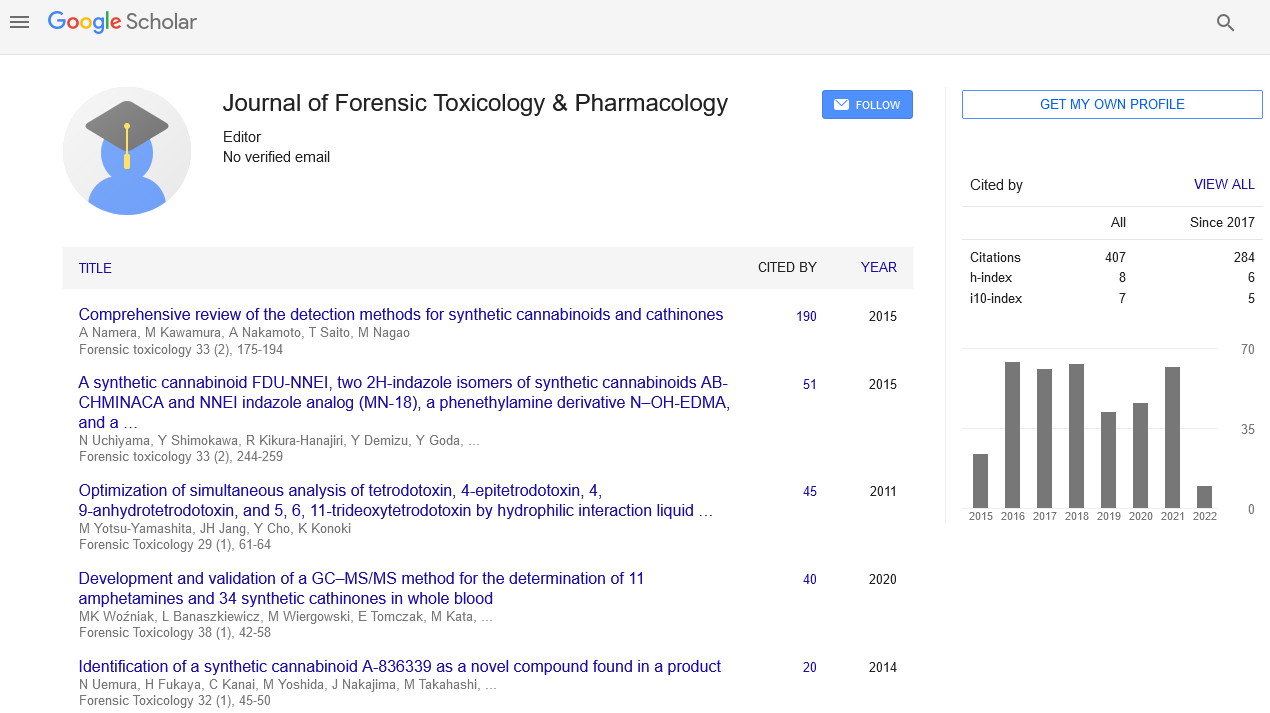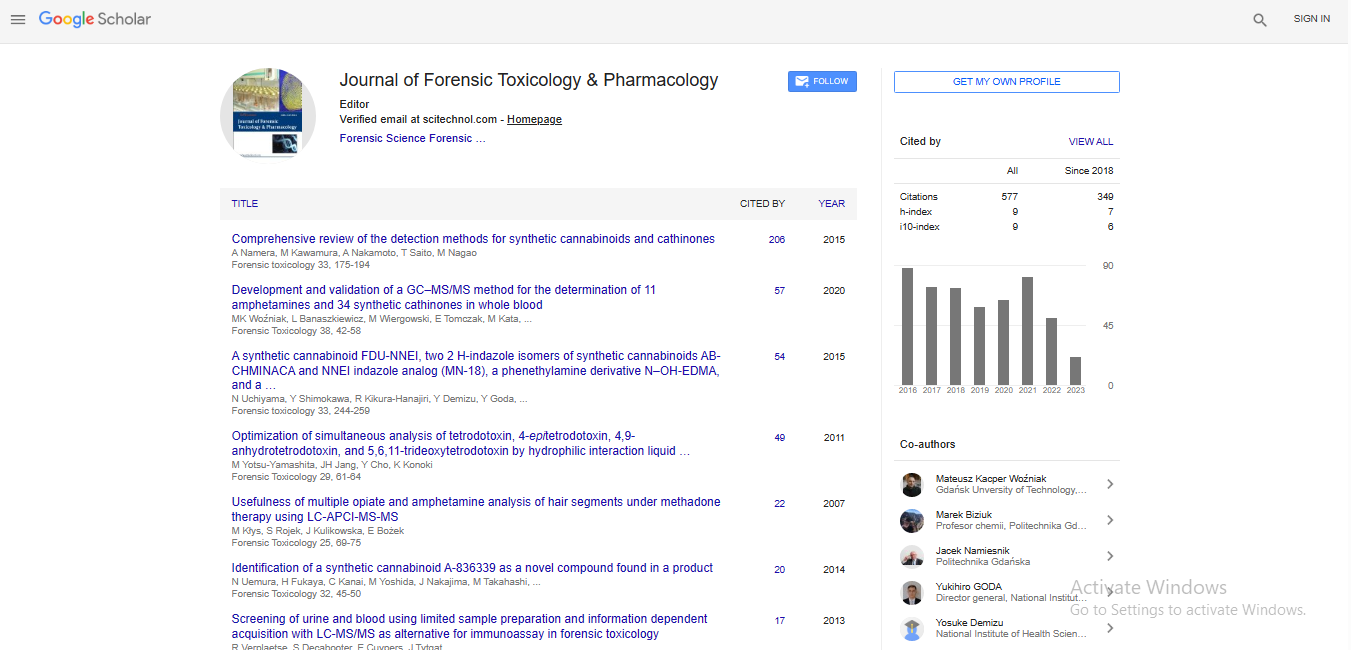Commentary, J Forensic Toxicol Pharmacol Vol: 13 Issue: 4
Predictive Models for Toxicokinetics in Pharmaceuticals
Suarez Orozco*
1Department of Forensic Medicine, University of Pecs, Pecs, Hunga
*Corresponding Author: Suarez Orozco,
Department of Forensic Medicine,
University of Pecs, Pecs, Hungary
E-mail: orozcosuarez@gmail.com
Received date: 26 November, 2024, Manuscript No. JFTP-24-156305;
Editor assigned date: 28 November, 2024, PreQC No. JFTP-24-156305 (PQ);
Reviewed date: 12 December, 2024, QC No JFTP-24-156305
Revised date: 19 December, 2024, Manuscript No. JFTP-24-156305 (R);
Published date: 26 December, 2024, DOI: 10.4172/JFTP.1000211.
Citation: Orozco S (2024) Predictive Models for Toxicokinetics in Pharmaceuticals. J Forensic Toxicol Pharmacol 13:4.
Description
In recent years, the pharmaceutical industry has witnessed significant advancements in the field of predictive toxicokinetics. The ability to predict the toxicity of pharmaceutical compounds before they are tested on humans or animals is invaluable for ensuring drug safety and efficiency in the drug development process. Toxicokinetics, which studies the Absorption, Distribution, Metabolism and Excretion (ADME) of substances in the body, plays a central role in predicting potential toxic effects. Historically, toxicological assessments have been carried out through extensive animal testing and laboratory experiments, which are often time-consuming, expensive and raise ethical concerns. Predictive models have emerged as a transformative solution, enabling quicker, more accurate and more ethical alternatives to traditional toxicological assessments.
The core goal of predictive toxicokinetics is to simulate how a drug behaves within the body in order to identify any harmful effects. By studying the ADME properties of a drug, researchers can estimate its concentration in various tissues and organs, helping to predict any adverse effects such as organ toxicity, mutagenicity, or carcinogenicity. Predictive models allow researchers to evaluate a chemical’s potential risk in humans much earlier in the drug development pipeline, reducing the time and resources spent on compounds that may not be suitable for further testing.
One of the key techniques used in predictive toxicokinetics is the development of pharmacokinetic models. These models are designed to describe the movement of a drug through the body, considering factors such as its absorption rate, how it is distributed across tissues, how it is metabolized by enzymes and how it is eliminated via the kidneys or liver. A variety of mathematical models can be used to simulate these processes, including compartmental models, which represent the body as a series of interconnected compartments that mimic organs and tissues. These models use parameters such as drug half-life, volume of distribution and clearance rates to estimate how much of a drug will remain in the bloodstream and for how long, providing important information about its potential for toxicity.
More advanced methods involve the use of machine learning algorithms and Artificial Intelligence (AI). Machine learning is a subset of AI that allows systems to learn from data and improve their predictions over time. When applied to toxicokinetics, machine learning models are trained on large datasets of chemical properties, metabolic profiles and known toxic outcomes. These algorithms can then analyze novel compounds, predict their toxicity potential and even identify structural features that are associated with toxic effects. This approach can identify patterns in the data that may not be apparent through traditional statistical methods, significantly enhancing the accuracy and reliability of predictions.
AI-based predictive models can also account for a variety of variables, including genetic differences between individuals and environmental factors, which can significantly affect how a drug is metabolized. For instance, the presence of specific enzymes in the liver may alter the rate at which a drug is metabolized, which can impact its toxicity. AI models that integrate genetic and demographic data can help to predict how different populations may respond to the same drug, potentially highlighting safety concerns in certain groups that might have gone unnoticed. Predictive models for toxicokinetics are an exciting advancement in the pharmaceutical industry, offering a faster, and more efficient and ethical way to assess the safety of drugs. By combining computational tools, machine learning and experimental data, these models enable scientists to simulate how a drug behaves in the body and predict potential toxic effects. As technology continues to evolve and more data becomes available, predictive toxicokinetics is expected to play an even larger role in drug development, improving safety assessments, reducing the reliance on animal testing and ultimately accelerating the introduction of safer medications to the market.
 Spanish
Spanish  Chinese
Chinese  Russian
Russian  German
German  French
French  Japanese
Japanese  Portuguese
Portuguese  Hindi
Hindi 
